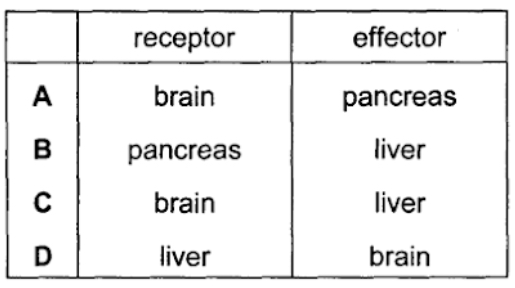homeostasis, hormones, thermoregulation
1/13
There's no tags or description
Looks like no tags are added yet.
Name | Mastery | Learn | Test | Matching | Spaced |
|---|
No study sessions yet.
14 Terms
define homeostasis
the maintenance of a constant internal environment
list the basic principles (steps) of homeostasis
change in internal environment (stimulus) → receptor + control centre → corrective mechanism → negative feedback
define and describe a hormone
a chemical substance, produced by a gland, carried by the blood, which alters the activity of one or more specific target organs.
explain what is meant by an endocrine gland
they are ductless glands that transport their secretions through the bloodstream
the islets of Langerhans pancreas is an endocrine gland which secretes insulin and glucagon
explain the importance of maintaining a constant blood glucose level
for tissue respiration (energy)
explain how the blood glucose concentration is regulated by insulin as a homeostatic mechanism
explain how the blood glucose concentration is regulated by glucagon as a homeostatic mechanism
describe type 2 diabetes mellitus
in terms of a persistently higher than normal blood glucose concentration due to the body’s resistance to insulin / insufficient production of insulin
identify the risk factors of type 2 diabetes mellitus
Obesity/overweight
Age
Family history (diabetes can be inherited)
Unhealthy blood lipid levels
Sedentary lifestyle
identify ways to manage type 2 diabetes mellitus
describe what happens when body temperature increases above normal
explain in terms of S, R+CC, CM, NF
describe what happens when body temperature decreases below normal
explain in terms of S, R+CC, CM, NF
which is not a function of the liver?
conversion of glucose to glycogen
storage of glycogen
secretion of insulin
synthesis of proteins from amino acids
secretion of insulin (pancreas)

in the control of blood glucose level, which organs are the receptor and effector?
B) receptor: pancreas | effector: liver